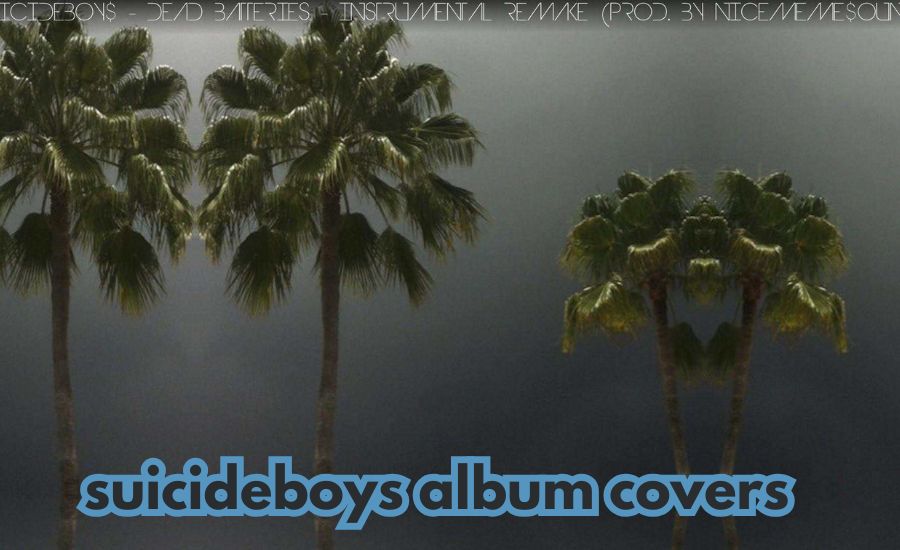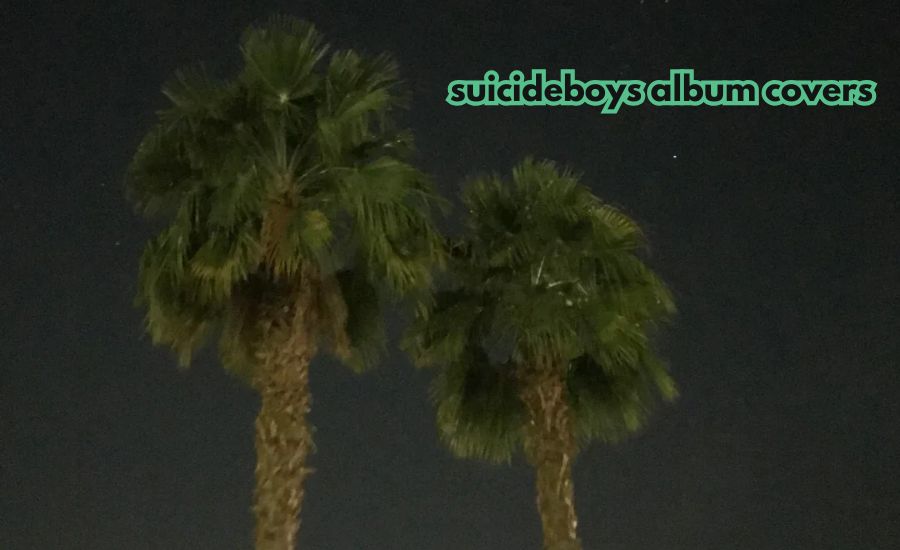At US NOWADAYS, we dive deep into the unique world of music, and today, we’re exploring a topic that has fascinated fans and art lovers alike: the suicideboys album covers. These covers have become an iconic part of the duo’s brand, reflecting their raw, gritty sound and the intense themes explored in their music. Each cover offers a visual journey into the darker side of life, often challenging societal norms and expressing feelings of despair, nihilism, and rebellion. In this blog post, we’ll break down the meaning behind some of their most famous album covers and how they reflect the duo’s unique musical identity.
What Makes $uicideboy$ Album Covers Stand Out?
The Power of Visual Art in Music
$uicideboy$ album covers aren’t just simple designs; they are visual representations of their music and themes. The duo has mastered the art of blending intense, often disturbing imagery with thought-provoking symbolism. Unlike mainstream music covers that might feature polished aesthetics or commercial appeal, suicideboys album covers are gritty, surreal, and often unsettling. This rawness is key to the band’s identity and resonates deeply with their fanbase.
Why $uicideboy$ Uses Dark, Abstract Art
The duo’s decision to feature dark, abstract art is no accident. Their music often touches on heavy topics such as mental health struggles, addiction, and existential crises. The artwork mirrors these themes, capturing the feeling of isolation and inner turmoil that their lyrics often express. For instance, in suicideboys album covers albums like “I Want to Die in New Orleans,” the cover art portrays a grim reaper figure looming over a city, symbolizing death’s ever-present influence, a theme that runs throughout the album.
Analyzing Iconic $uicideboy$ Album Covers
I Want to Die in New Orleans” (2018)
The suicideboys album covers from “I Want to Die in New Orleans” stand out due to their dark, haunting visuals. The cover depicts a figure in a hooded robe, standing against a stark city backdrop with no clear signs of life. The use of shadows and the absence of any form of warmth in the image reflect the themes of loneliness, desolation, and the search for meaning in a city filled with broken dreams. The figure in the cover represents the band’s feeling of alienation and the inescapable darkness that often dominates their music.
“Kill Yourself Part XX: The Infinity Saga” (2019)
One of the most unique suicideboys album covers comes from the “Kill Yourself Part XX: The Infinity Saga.” The cover showcases surreal, almost nightmarish imagery, with disembodied skulls and abstract shapes dominating the scene. This cover pushes the boundaries of what fans might expect, creating an uncomfortable but thought-provoking visual narrative that matches the album’s aggressive and dark tone. The use of these intense visual elements communicates the album’s theme of chaos, confusion, and relentless pursuit of self-destruction.
“Long Term Effects of Suffering” (2020)
The album cover for “Long Term Effects of Suffering” is another perfect example of suicideboys album covers that encapsulate the emotional weight of the music. The artwork is abstract and minimalistic, showcasing dark clouds swirling above a desolate landscape. The simplicity of the design speaks volumes, echoing the theme of inner turmoil and the long-lasting effects of pain and suffering. The dark tones and lack of any bright colors create an oppressive atmosphere, which is in perfect harmony with the mood of the album.

The Impact of $uicideboy$ Album Covers on Fan Culture
Creating a Visual Identity for the Fans
One of the most striking aspects of suicideboys album covers is how they’ve become a part of fan culture. The dark, often cryptic designs are instantly recognizable, and they resonate with fans who identify with the themes of pain, rebellion, and hopelessness explored in the duo’s music. These album covers aren’t just decorative; they’re a form of visual storytelling that allows fans to connect even more deeply with the music. Many fans choose to tattoo these iconic covers on their bodies, turning the artwork into permanent markers of identity.
The Power of Symbolism
In the world of suicideboys album covers, symbolism plays a critical role in their album covers. The images aren’t simply there for aesthetic purposes; they’re layered with meaning. From the use of skulls and grim reapers to the inclusion of abstract shapes and dark clouds, every element is designed to evoke a strong emotional response. Fans often analyze the covers for deeper meanings, finding personal connections to their own lives and struggles. For example, the stark, minimalist artwork of albums like “Long Term Effects of Suffering” invites fans to reflect on their own emotional battles and the long-term toll of their experiences.
Read Next: casteo
How $uicideboy$ Album Covers Mirror Their Music and Themes
Rebellion Against Conventional Music Art
The suicideboys album covers are a clear rebellion against the polished, commercialized imagery often seen in mainstream music. The rough, unrefined aesthetic mirrors the rebellious spirit of the duo’s sound, which mixes elements of punk, hip-hop, and metal. The covers reflect the duo’s desire to stay true to themselves and reject societal norms. This rejection of commercial appeal is also seen in their lyrics, which often challenge authority and explore themes of nihilism and personal struggle.
The Darkness and Pain in Their Art
At the heart of suicideboys album covers lies a focus on pain, darkness, and suffering. The artwork often features imagery that evokes feelings of dread, fear, and alienation, mirroring the dark themes in the duo’s lyrics. Whether it’s the eerie figure on the cover of “I Want to Die in New Orleans” or the nightmarish skulls from “Kill Yourself Part XX,” the covers create an atmosphere of discomfort that aligns with the heavy, aggressive tone of their music.

The Influence of $uicideboy$ on Other Artists’ Album Covers
Setting a Trend in Underground Hip-Hop
The success of suicideboys album covers has had a significant influence on the wider underground hip-hop scene. Many artists now use similarly dark, minimalist, and surreal styles in their own album artwork, inspired by the bold choices made by $uicideboy$. The covers have pushed the boundaries of what is acceptable in hip-hop art, and many artists in the genre have embraced a more raw and authentic approach to visual storytelling.
Art as an Extension of Music
For suicideboys album covers, the album cover is more than just an image—it’s an integral part of their artistic expression. The artwork is just as important as the music itself, serving as a visual representation of the emotional and thematic journey the duo is exploring. This holistic approach to music and art has influenced many in the underground hip-hop world, where album covers are increasingly seen as vital to the overall experience of the music.
Conclusion
The suicideboys album covers are a powerful reflection of the duo’s dark, raw, and rebellious nature. From the haunting imagery in “I Want to Die in New Orleans” to the disturbing skulls in “Kill Yourself Part XX,” these covers are more than just artistic representations—they are a part of the music’s soul. The covers encapsulate the themes of pain, suffering, and nihilism that run through the duo’s work, creating a unique visual identity for both the band and their fans. At US NOWADAYS, we’ve analyzed the deeper meaning behind these covers to provide a more comprehensive understanding of their impact on both the music industry and fan culture.
In a world where album covers often serve as mere marketing tools, suicideboys album covers stand out as genuine works of art that enhance the emotional and thematic depth of the music. Whether it’s the abstract, minimalistic designs or the surreal, nightmarish visuals, each cover tells a story that fans can connect with on a personal level. The influence of $uicideboy$ on the genre and the wider music industry cannot be overstated, and their album covers will undoubtedly remain iconic for years to come.
FAQs
Q: What do the $uicideboy$ album covers represent?
A: The album covers represent themes like pain, suffering, rebellion, and nihilism. They are visual expressions of the duo’s music and the emotions they explore in their lyrics.
Q: Why are $uicideboy$ album covers so dark?
A: The darkness in their album covers reflects the heavy and suicideboys album covers intense themes in their music, such as mental health struggles, addiction, and existential crises.
Q: How have $uicideboy$ album covers influenced other artists?
A: Their dark, minimalist, and surreal art style has inspired many underground hip-hop artists to adopt similar approaches in their own album covers.
Q: What is the most iconic $uicideboy$ album cover?
A: “I Want to Die in New Orleans” is often considered one of their most iconic album covers due to its haunting, symbolic imagery.
Explore the Latest Blogs on: US Now A DAYS










